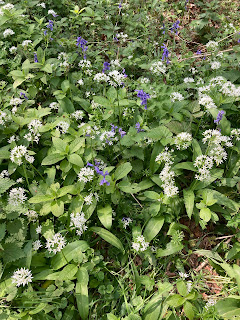Phasia hemiptera
Tachinid flies are parasitoids and parasites, preying on other invertebrates, including other Dipterans (flies). Parasites are species that live in association with another species, causing it harm, and parasitoids are parasites that ultimately kill their host. P. hemiptera is a endoparasitoid of shield bug species, for example the Green Shield Bug (Palomena prasina). The larvae live inside shield bugs (hence endo-) and ultimately kill their host (hence -parasitoid). The species name hemiptera apparently alludes to the wing shape of the fly appearing like that of the true bugs, not its taste for Hemipteran flesh as a larva. Given the large size of this fly, it might seem surprising that the larvae can fit inside shield bugs. But research suggests that upon parasitisation, the bugs swell to accommodate their unwelcome room mates.

Despite their slightly gruesome larval stage, the adults serve as important pollinators. Flies often have misunderstood importance when it comes to ecosystem services. Hoverflies are becoming more recognised for their pollination roles, despite being frequently mistaken for bees or wasps! But other families of flies, including Tachinids, are mostly missed off the list of vital insects, and deserve more recognition for their hard work!
I would argue that the most amazing part of a fly is its eyes. Each eye is made up of hundreds of lenses, all taking in huge amounts of visual information all the time. They see so well that trying to catch them largely proves an impossible task! For them, you could imagine that our movements are so painfully slow that they appear like bullets in the matrix, easy to dodge. The downside of this exceptionally fast processing speed of visual stimuli is that very slow movements are not really registered, so if you want to sneak up on a fly to get a good look, it is best to move really slowly, as to them, it appears as if you are not really moving at all!
.jpg)



Comments
Post a Comment